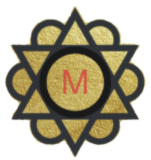
Burnout is a state of emotional, physical, and mental exhaustion caused by prolonged and excessive stress. For tarot readers, the signs of burnout can manifest in various ways, often creeping in unnoticed until they become overwhelming. One of the most common indicators is a sense of detachment or cynicism towards the practice.
A reader may find themselves feeling apathetic about readings, lacking the enthusiasm that once fueled their passion for tarot. This emotional distance can lead to a decline in the quality of readings, as the reader may struggle to connect with clients or interpret cards with the depth and insight they once provided. Another significant sign of burnout is a persistent feeling of fatigue, even after a full night’s rest.
Tarot reading requires not only mental acuity but also emotional energy, as readers often absorb the feelings and energies of their clients. When this energy becomes depleted, it can lead to a sense of lethargy and an inability to engage fully with the practice. Additionally, physical symptoms such as headaches, insomnia, or gastrointestinal issues may arise as stress takes its toll on the body.
Recognizing these signs early is crucial for tarot readers to take proactive steps toward recovery and maintain their well-being.
Key Takeaways
- Recognizing the Signs of Burnout:
- Pay attention to feelings of exhaustion, cynicism, and decreased effectiveness
- Take note of physical symptoms such as headaches, stomach issues, and insomnia
- Be aware of emotional signs like irritability, lack of motivation, and feeling detached from clients
- Setting Boundaries with Clients:
- Clearly communicate your availability and response times
- Establish limits on the topics and types of readings you offer
- Practice saying no to clients when necessary
- Taking Breaks and Self-Care:
- Schedule regular breaks between readings
- Engage in activities that bring you joy and relaxation
- Prioritize your physical and mental well-being
- Diversifying Your Tarot Practice:
- Explore different tarot spreads and techniques
- Offer specialized readings for specific topics or demographics
- Incorporate other divination tools or modalities into your practice
- Seeking Support and Community:
- Connect with other tarot readers for mentorship and collaboration
- Join online or local tarot communities for networking and support
- Seek out professional development opportunities and workshops
- Reconnecting with the Meaning and Purpose of Tarot Reading:
- Reflect on the impact of your readings on clients’ lives
- Revisit your personal connection to tarot and its spiritual significance
- Find inspiration in the stories and feedback from clients
Setting Boundaries with Clients
Establishing clear boundaries with clients is essential for maintaining a healthy tarot practice and preventing burnout. Many tarot readers are empathetic by nature, which can make it challenging to say no or limit the time spent on readings. However, setting boundaries is not only beneficial for the reader but also for the clients, as it fosters a professional relationship built on respect and understanding.
One effective strategy is to define specific hours for readings and stick to them. By creating a schedule that allows for personal time and reflection, readers can ensure they are not overextending themselves. In addition to time boundaries, it is also important to establish emotional boundaries.
This involves recognizing when a client’s needs may be overwhelming or when their expectations exceed what is reasonable. For instance, if a client frequently seeks urgent readings or relies heavily on the reader for emotional support, it may be necessary to communicate that while you are there to provide guidance, you are not a substitute for professional therapy or counseling. By articulating these boundaries clearly and compassionately, tarot readers can protect their own mental health while still offering valuable insights to their clients.
Taking Breaks and Self-Care

Incorporating regular breaks and self-care practices into a tarot reading routine is vital for sustaining energy and enthusiasm. The act of reading tarot can be emotionally taxing, especially when dealing with clients who present heavy or complex issues. Taking intentional breaks allows readers to recharge and reflect on their experiences without becoming overwhelmed.
This could mean stepping away from the cards for a few days or even engaging in different activities that bring joy and relaxation, such as spending time in nature, practicing yoga, or indulging in creative hobbies. Self-care extends beyond physical breaks; it also encompasses mental and emotional well-being. Engaging in mindfulness practices, such as meditation or journaling, can help tarot readers process their experiences and emotions related to their practice.
These activities not only provide a necessary respite but also enhance intuition and clarity when returning to readings. Furthermore, nurturing personal interests outside of tarot can foster a more balanced life, allowing readers to draw inspiration from various sources and return to their practice with renewed vigor.
Diversifying Your Tarot Practice
Diversifying one’s tarot practice can be an effective way to combat burnout and reignite passion for the craft. This could involve exploring different styles of reading or incorporating new tools and techniques into sessions. For example, a reader might experiment with combining tarot with other divination methods such as astrology or numerology, creating a more holistic approach that enriches the reading experience for both the reader and the client.
This not only keeps the practice fresh but also allows for deeper insights that may not emerge through tarot alone. Additionally, diversifying can mean expanding the types of clients served or the contexts in which readings are offered. A reader might consider branching out into group readings, workshops, or online courses that teach others about tarot.
This shift not only provides variety but also fosters community engagement and connection with others who share similar interests. By embracing new opportunities within the realm of tarot, readers can cultivate a sense of excitement and purpose that helps mitigate feelings of burnout.
Seeking Support and Community
The journey of a tarot reader can often feel isolating, particularly when faced with challenges such as burnout or self-doubt. Seeking support from fellow practitioners can be invaluable in navigating these experiences. Joining tarot communities—whether online or in-person—provides an opportunity to share insights, exchange ideas, and receive encouragement from others who understand the unique challenges of the practice.
These communities often foster an environment where readers can discuss their struggles openly without fear of judgment.
Connecting with more experienced practitioners can provide guidance on navigating difficult situations or refining one’s reading style.
Mentors can offer valuable feedback and share their own experiences with burnout, helping newer readers develop strategies to maintain balance in their practice. By building a network of support, tarot readers can feel less alone in their journey and more empowered to continue pursuing their passion.
Reconnecting with the Meaning and Purpose of Tarot Reading

Reigniting Passion
Taking time to reflect on why one started reading tarot in the first place can reignite that spark of passion and remind readers of the profound impact they have on others’ lives. Engaging in personal study or exploration of tarot’s history and symbolism can also deepen one’s connection to the practice.
Cultivating a Deeper Connection
By immersing oneself in the rich tapestry of tarot’s traditions and meanings, readers can cultivate a renewed sense of purpose that transcends mere transactional interactions with clients. This reconnection not only enhances the quality of readings but also fosters a deeper appreciation for the art of tarot itself.
A More Fulfilling Practice
Ultimately, this renewed sense of purpose leads to a more fulfilling practice overall.
If you’re interested in delving deeper into the world of tarot readings, you may want to check out Unlocking the Secrets of Tarot Card Meanings. This article explores the meanings behind different tarot cards and how they can be interpreted in readings. Understanding the symbolism and messages of each card can help enhance your tarot reading practice and prevent burnout.
FAQs
What is tarot reading burnout?
Tarot reading burnout is a state of emotional, mental, and physical exhaustion caused by prolonged and excessive tarot reading. It can lead to feelings of overwhelm, disconnection, and a decrease in the quality of readings.
What are the signs of tarot reading burnout?
Signs of tarot reading burnout may include feeling drained or exhausted after readings, a lack of motivation or inspiration, difficulty focusing during readings, and a decrease in the accuracy of readings.
How can tarot readers avoid burnout?
Tarot readers can avoid burnout by setting boundaries around their readings, taking regular breaks, practicing self-care, seeking support from other readers or mentors, and diversifying their interests and activities outside of tarot.
Why is it important to avoid tarot reading burnout?
Avoiding tarot reading burnout is important because it can impact the quality of readings, the well-being of the reader, and the overall enjoyment of tarot practice. Burnout can also lead to a loss of passion and interest in tarot reading.
What are some self-care practices for tarot readers?
Self-care practices for tarot readers may include meditation, exercise, spending time in nature, journaling, seeking therapy or counseling, engaging in creative hobbies, and setting aside time for relaxation and leisure activities.






